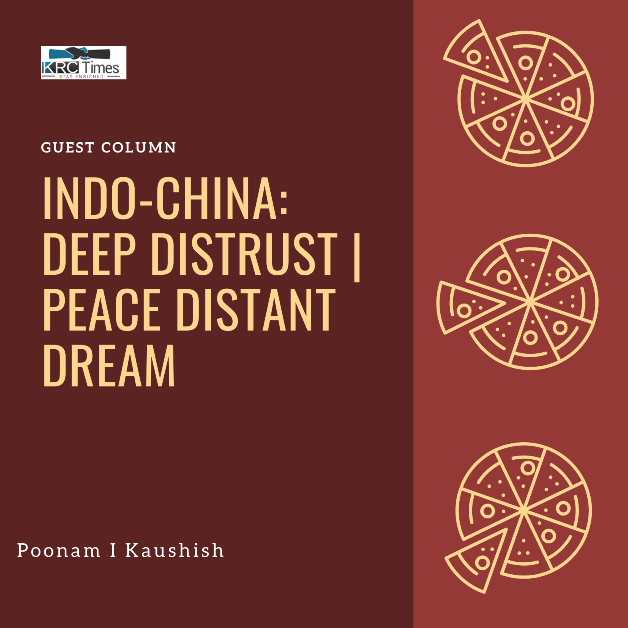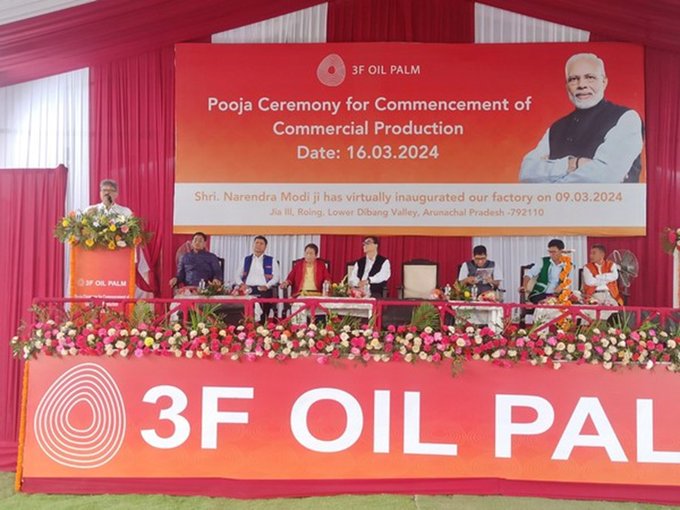As they stand at a crossroad both neighbours will have to build trust brick by brick towards the coexistence of cooperation and competition, beginning with eastern Ladakh

Neighbour or enemy? Both. Indeed, India-China relations are like playing a poker game. Show no emotions even as one plans strategy, play is multi-causal, defiantly stand one’s ground and gambling on a winning hand. Both New Delhi and Beijing are doing just that, betting, with the underwritten message: Don’t mess with me.
The latest Pentagon report to the US Congress on China is worrying. Not only does it refer to Beijing building a tiny village in Arunachal Pradesh’s upper Subansiri region but underscores it is the “only country capable of combining its economic, military, diplomatic and technological power to mount a sustained challenge to democracies through military modernisation by expanding its nuclear warheads to 1,000 by 2030.”
Adding to the over-21 months continuing standoff in Eastern Ladakh, there is a new headache: Bhutan. Whereby Thimpu didn’t think it necessary to take New Delhi into confidence about the ‘roadmap’ it signed with Beijing recently vis-à-vis resolving their longstanding boundary dispute. Making plain it did not want to be dragged into the geo-political rivalry between India and China.
Giving Beijing, an opportunity to thumb its nose at New Delhi as its roadmap came four days after the 13th round of India-China corps commander level meeting. Delhi’s muted reaction betrays bewilderment mixed with suppressed fury and puts a hole through its Doklam narrative which has complicated Indo-Sino ties further.
Recall, in June 2017, Chinese troops attempted to construct a road near Doklam plateau claimed by Bhutan and China. Indian troops stepped in as the territory lay close to its highway. After a 73 days face-off both sides withdrew troops, but subsequent satellite images show Chinese military infrastructure therein on a permanent footing. Strangely, New Delhi preferred to look away.
Undeniably, despite umpteen military and diplomatic dialogues, Beijing continues to take “incremental and tactical” actions to press its claims along the LAC, including its new village/ PLA’s military camp in Arunachal. Said a China watcher “One of Beijing’s strategic aims in the standoff is to prevent India from deepening its ties with US.”
There seem to be two strands in Chinese thinking about India. One, which recognizes India’s economic, scientific, and military capabilities rise, though not as rapidly as China’s. Two, many Chinese leaders are dismissive of New Delhi’s claims of being a major power and consider these unrealistic and pretentious.
Yet, both are ambivalent about the other’s success and wary of the other’s ambitions but also respectful and mindful that both would rise in comparison with the world. Some feel though modus vivendi is already under stress due to gap in the relative comprehensive national power of both countries, yet they are not pessimistic about the future despite mistrust.
Besides, China’s growing footprint in South Asia is also viewed negatively by Raisina Hill resulting in rifts over unequal benefits from its engagement policy, exposing underlying strategic dissonance and rivalry. Said a seasoned diplomat, “China seems to follow ‘wen shui zhu qingwa’ (slowly heat water to kill the frog) policy wherein one arouses minimal suspicion in India before the new equilibrium, to China’s advantage.
Today, India is enveloped in a deeply troubled relationship with China which poses the biggest strategic-security challenge. Not only has chill set in but deep mistrust and lack of confidence are apparent. Yet the two have not rejected dialogue, even when it is no more than repetition of known positions. New Delhi cannot afford to take any chances with what constitutes India’s national security and strategic interests and pursue them doggedly.
China’s desire to restrict India as a regional power has been further exacerbated by New Delhi’s vocal criticisms of Xi’s Belt and Road Initiative. Modi’s shift to a hyperactive foreign policy has seen deepening partnerships with the US and other Indo-Pacific powers. Moving from its long-standing “Act East” policy, New Delhi has swiftly adopted the Indo-Pacific concept into its strategic thinking.
Certainly, Beijing realizes India’s centrality in its competition with the West, particularly the US hence it sees India’s Indo-Pacific partnerships as a potential threat to its own interests. It views India’s focus on building strategic partnerships around Indo-Pacific as a hedging attempt against its interests in the region. Although India remains far behind China, these developing ties could pose a threat to Chinese global ambitions.
Modi realizes that in today’s geostrategic political reality pragmatism dictate real politic. There are no shortcuts. India needs an all-encompassing and multi-pronged strategy to deal with China even as it wants durable peace through this alone cannot guarantee non-escalation. Dealing with a revisionist, authoritarian power which intends to refashion the global order to suit its own interests is dicey. From New Delhi’s perspective, it will require mobilising all factors to counter Beijing’s threat.
India would need to give China full attention, partner closely with US and Quad alongside adopting an all-of-Government approach to counter Chinese belligerence. Said a foreign diplomat, “The biggest challenge for New Delhi is that whether initiatives such as Quad and anti-China metrics can reverse India’s growing isolation in South Asia.”
India cannot afford to lower its guard given both countries will find it increasingly difficult to calibrate and control their responses in ways that satisfy their political, military and strategic aims. Moreover, their failure to manage the 2020 border dispute peacefully shatters a useful precedent: Neither side can be confident about which redlines the other will observe. China-India relations have entered a new, more precarious, and unpredictable era.
With bilateral tensions remaining high and warning indicators for conflict continuing to blink red Indo-Sino ties remain “profoundly disturbed.” Modi and Xi have a good measure of each other and share mutual respect. They should be able to talk about identity misperceptions and possible ways of reconciling their respective visions. A key consideration could be whether China can afford to have an antagonistic India on its border as it moves to the world center-stage and whether India can afford to close a door to multi-alignment that has served it well.
The prospects of forwarding movement will depend on lessons China and India draw from the Ladakh crisis. If Beijing believes that Indo-Sino relations hold no great prospects in the current international scenario and that India is already a quasi-ally of the US then it might be difficult to manage bilateral differences whereby it could lead to more confrontations.
If New Delhi believes Beijing is intent on bullying or humiliating it because of its superiority by always pro-actively resetting borders or trying to damage India’s global or regional profile the situation might become challenging. China is a totally different beast whom we have hardly been able to understand, let alone manage to tame and befriend it on our terms.
As they stand at a crossroad both neighbours will have to build trust brick by brick towards the coexistence of cooperation and competition, beginning with eastern Ladakh. China should be prepared to put aside any idea that faith can be restored by decoupling the boundary question from the larger bilateral relationship. The boundary is fundamental to the relationship and the key is to find a mutually acceptable resolution.
Else, a new phase of antagonistic rivalry could start as the strategic periphery of China collides with the strategic backyard of India. Clearly, as Beijing strives to create a ‘new normal’, tough responses to provocations and clear red zones are the best guarantee of peace in the sub-Continent. An intoxicating mix of muscular diplomacy and ruthlessness masked in velvet gloves. India has spelt out the rules of the game: It takes two to tango! —- INFA
Advertisements | 5E For Success

5 Advantages of KRC 5E MDP program, powered by KRC Foundation.
1. Employability training
2. Internship
3. Earn while you learn ( Work Experience Certificate, subject to selection and performance)
4. 100% Cashback on Fees through Global Garner
5. KRC Membership & Placement assistance.
Send your resume to get a free profiling session and selection.
Email resume: 5eforsuccess@gmail.com
WP: 9330830083





